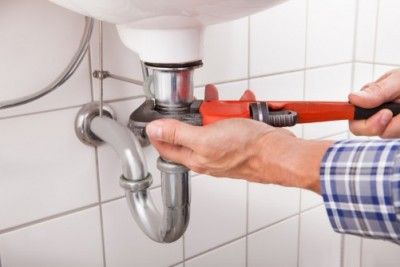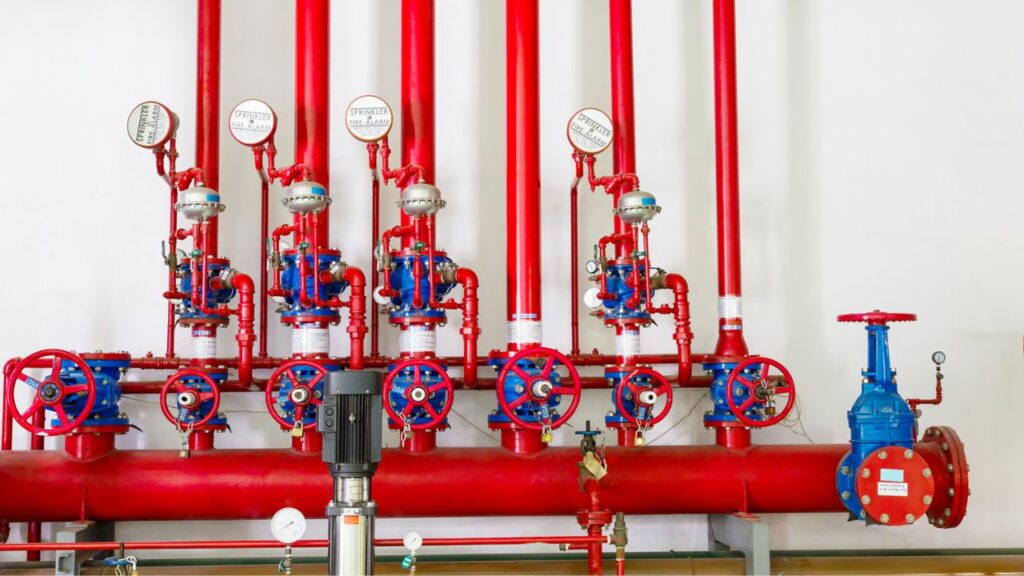The Complete Guide to Your Property's Plumbing System Anatomy
The Complete Guide to Your Property's Plumbing System Anatomy
Blog Article
The article author is making a number of good pointers on the subject of Anatomy of a House: Understanding the Components overall in this content directly below.

Understanding exactly how your home's pipes system works is essential for each property owner. From providing clean water for alcohol consumption, cooking, and showering to safely getting rid of wastewater, a well-maintained plumbing system is crucial for your family's health and wellness and convenience. In this extensive overview, we'll explore the detailed network that comprises your home's pipes and offer pointers on maintenance, upgrades, and taking care of common issues.
Introduction
Your home's plumbing system is greater than simply a network of pipelines; it's a complex system that guarantees you have access to clean water and effective wastewater removal. Understanding its parts and how they work together can assist you stop pricey fixings and ensure whatever runs smoothly.
Fundamental Elements of a Pipes System
Pipes and Tubes
At the heart of your pipes system are the pipes and tubing that carry water throughout your home. These can be made of various products such as copper, PVC, or PEX, each with its benefits in regards to longevity and cost-effectiveness.
Components: Sinks, Toilets, Showers, and so on.
Components like sinks, commodes, showers, and bath tubs are where water is made use of in your house. Understanding how these fixtures attach to the pipes system assists in identifying issues and preparing upgrades.
Valves and Shut-off Points
Valves control the flow of water in your plumbing system. Shut-off valves are crucial during emergencies or when you require to make fixings, permitting you to separate parts of the system without disrupting water flow to the entire home.
Water System
Key Water Line
The major water line connects your home to the community water supply or a private well. It's where water enters your home and is distributed to various fixtures.
Water Meter and Pressure Regulator
The water meter steps your water usage, while a pressure regulator makes sure that water streams at a secure stress throughout your home's pipes system, protecting against damages to pipelines and components.
Cold Water vs. Warm water Lines
Recognizing the difference in between cold water lines, which provide water straight from the primary, and warm water lines, which bring warmed water from the hot water heater, assists in fixing and planning for upgrades.
Drain System
Drain Pipeline and Traps
Drain pipes carry wastewater away from sinks, showers, and toilets to the sewage system or sewage-disposal tank. Catches avoid sewer gases from entering your home and also trap particles that can create blockages.
Ventilation Pipes
Ventilation pipes permit air right into the drain system, stopping suction that might slow down drainage and cause catches to vacant. Appropriate ventilation is important for maintaining the honesty of your pipes system.
Value of Proper Drainage
Making sure appropriate water drainage protects against backups and water damage. Regularly cleaning up drains pipes and preserving traps can stop costly repair services and extend the life of your pipes system.
Water Furnace
Kinds Of Water Heaters
Hot water heater can be tankless or standard tank-style. Tankless heating units warmth water on demand, while tanks save heated water for immediate usage.
Upgrading Your Plumbing System
Factors for Upgrading
Updating to water-efficient fixtures or replacing old pipelines can enhance water top quality, minimize water bills, and boost the value of your home.
Modern Plumbing Technologies and Their Advantages
Explore modern technologies like clever leak detectors, water-saving commodes, and energy-efficient water heaters that can conserve cash and reduce environmental influence.
Cost Considerations and ROI
Determine the upfront expenses versus lasting savings when considering plumbing upgrades. Several upgrades pay for themselves via decreased energy costs and fewer repair work.
Just How Water Heaters Connect to the Plumbing System
Comprehending just how water heaters connect to both the cold water supply and warm water circulation lines helps in diagnosing issues like inadequate warm water or leakages.
Maintenance Tips for Water Heaters
Frequently flushing your hot water heater to get rid of debris, checking the temperature settings, and examining for leakages can expand its life-span and boost power efficiency.
Common Plumbing Problems
Leakages and Their Reasons
Leakages can take place due to aging pipes, loose fittings, or high water stress. Attending to leakages without delay prevents water damage and mold growth.
Blockages and Obstructions
Blockages in drains pipes and bathrooms are commonly brought on by flushing non-flushable items or an accumulation of grease and hair. Utilizing drain screens and being mindful of what decreases your drains can avoid blockages.
Indications of Plumbing Issues to Look For
Low water pressure, slow drains, foul odors, or unusually high water bills are signs of potential pipes troubles that need to be resolved immediately.
Plumbing Maintenance Tips
Normal Examinations and Checks
Set up yearly pipes assessments to catch issues early. Look for signs of leakages, deterioration, or mineral accumulation in taps and showerheads.
DIY Maintenance Tasks
Simple jobs like cleansing faucet aerators, checking for toilet leakages making use of dye tablets, or shielding subjected pipes in cool environments can stop major plumbing concerns.
When to Call a Specialist Plumbing Technician
Know when a plumbing concern needs expert proficiency. Trying intricate repair services without appropriate knowledge can bring about even more damages and higher repair service costs.
Tips for Lowering Water Use
Easy routines like repairing leaks without delay, taking shorter showers, and running full tons of laundry and recipes can save water and lower your energy expenses.
Eco-Friendly Pipes Options
Think about sustainable pipes materials like bamboo for floor covering, which is durable and environment-friendly, or recycled glass for countertops.
Emergency situation Preparedness
Steps to Take Throughout a Plumbing Emergency situation
Know where your shut-off valves are located and how to switch off the water system in case of a burst pipeline or major leak.
Relevance of Having Emergency Situation Contacts Handy
Maintain get in touch with information for neighborhood plumbing technicians or emergency solutions easily offered for fast reaction throughout a pipes crisis.
Ecological Effect and Conservation
Water-Saving Components and Appliances
Setting up low-flow faucets, showerheads, and commodes can considerably lower water usage without giving up performance.
Do It Yourself Emergency Fixes (When Relevant).
Short-term repairs like making use of air duct tape to patch a leaking pipeline or positioning a bucket under a leaking faucet can lessen damages until an expert plumbing professional arrives.
Final thought.
Recognizing the anatomy of your home's plumbing system encourages you to maintain it efficiently, conserving money and time on repairs. By complying with normal upkeep routines and staying notified concerning modern plumbing innovations, you can guarantee your pipes system operates efficiently for many years to come.
The Anatomy of Your Home s Plumbing System
Understanding the anatomy of your home s plumbing system is essential for any homeowner. It not only helps in identifying potential issues but also facilitates effective communication with professionals when repairs or upgrades are needed. Your home s plumbing system is more than just pipes and faucets; it s a complex network that ensures the efficient and hygienic flow of water in and out of your house. In this blog, we ll dissect the crucial components of your home s plumbing system. For those in Antelope Valley, Brock Plumbing is your trusted partner for all your plumbing needs, ensuring your system functions smoothly and efficiently.
Water Supply System
Main Water Line: This is where your home s plumbing system begins. The main water line connects your home to the public water supply or a private well. Pipes and Shut-off Valves: Pipes distribute water throughout your home. Shut-off valves are crucial for controlling the flow of water and making repairs without shutting off the entire system. Drainage System
Drain Pipes: These pipes carry waste and water away from sinks, toilets, and showers. Vents: Vents allow sewer gases to escape and help maintain proper pressure in the drainage pipes, ensuring efficient flow of wastewater. Traps: Every fixture has a trap, a U-shaped pipe that holds water and prevents sewer gases from entering your home. The most common is the P-trap under sinks. Fixtures and Appliances
Fixtures and appliances are the most interacted with parts of your plumbing system. They include sinks, toilets, showers, dishwashers, and washing machines. Each fixture and appliance has its own supply and drainage connection, ensuring they receive clean water and can dispose of wastewater effectively.
Water Heating System
Your water heater is a crucial component, providing hot water to various fixtures and appliances in your home. It can be tank-based or tankless, with each type having its own set of advantages and maintenance requirements. Regular maintenance is essential to ensure efficient operation and extend the lifespan of the unit.
Sump Pump
In areas prone to flooding or with high water tables, a sump pump is an essential part of the plumbing system. It s installed in the lowest part of your basement or crawlspace and pumps out water that accumulates, preventing flooding and protecting your home from water damage.
Septic System
Homes that are not connected to a municipal sewer system have a septic system and an underground wastewater treatment structure. Understanding how to maintain your septic system is crucial to prevent backups, odors, and early system failure.
Conclusion
Your home s plumbing system is a complex and essential network, ensuring the efficient and hygienic flow of water in and out of your property. Understanding its key components helps in maintaining it properly and identifying issues before they escalate into major problems. For residents in Antelope Valley, Brock Plumbing is dedicated to providing top-notch services, ensuring that every part of your plumbing system is in perfect working order. Trust our team of professionals to handle all your plumbing needs, ensuring your home remains comfortable, safe, and well-maintained.
https://brockplumbinganddrains.com/blog/the-anatomy-of-your-homes-plumbing-system/

Hopefully you enjoyed our post on Anatomy of a House: Understanding the Components. Thank you for spending some time to read through our content. Appreciated our entry? Please quickly share it. Help someone else discover it. Thank you for taking the time to read it.
Booking Page Report this page